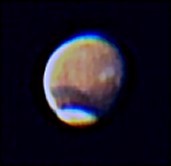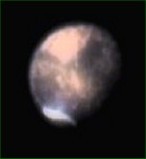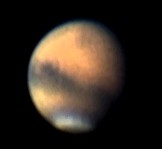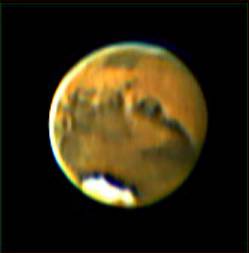
 7 Jun 03 gif movie of source frames for
previous image. The movie illustrates the seeing conditions from my
back yard on 7 Jun
03.
About
the ToUcam |
||
 Mars 11 Jun 03 ~ 0400 Local - 2x Barlow Note three clouds over the Tharsis region. |
Mars 17 Jun 03 ~ 0400 Local - 2x
Barlow
|
Mars 27 Jun 03 ~ 0400 Local - 2x
Barlow
|

Mars 03 July 03 ~ 0400 Local - 2x Barlow |
 Mars 12 July 02 ~ 0400 Local - 5x Barlow |
 Mars 31 July ~ 0230 Local - 2x Barlow - Magnified for display here. |